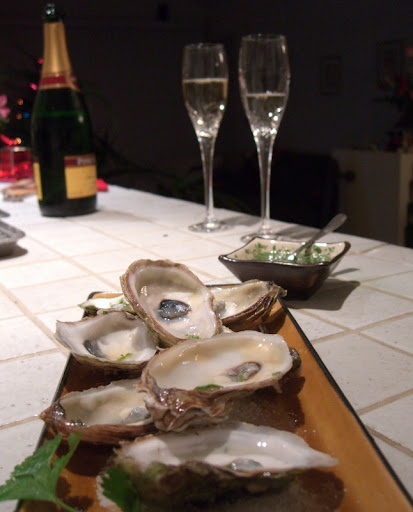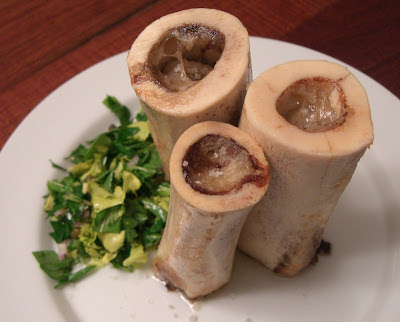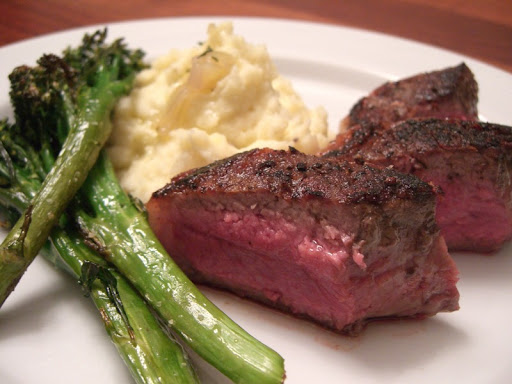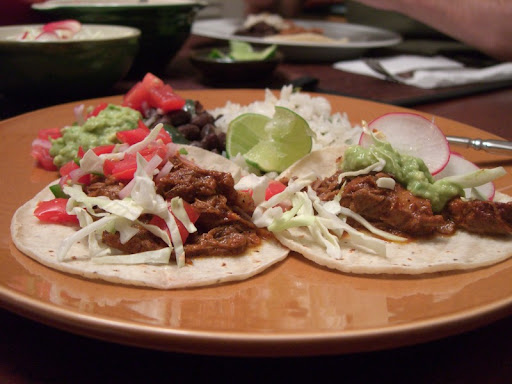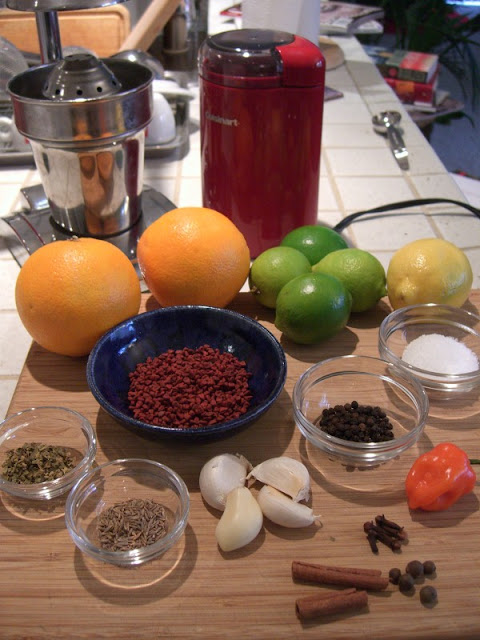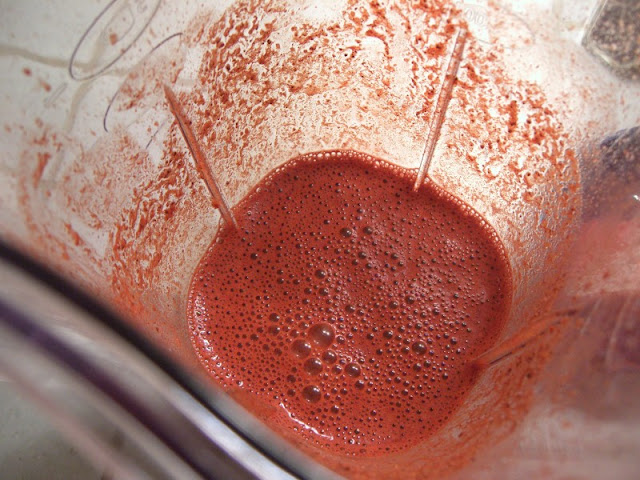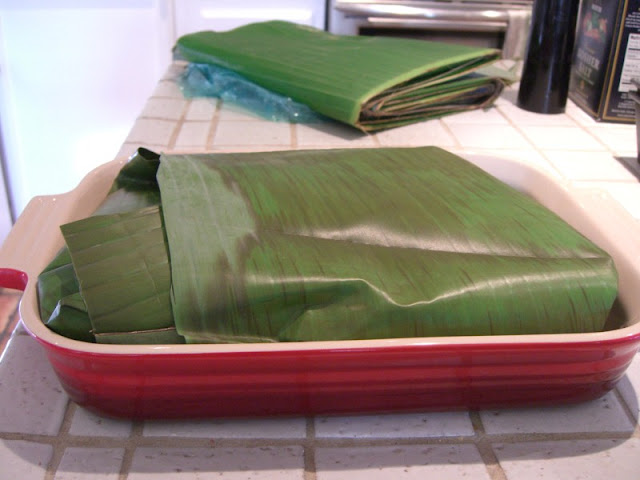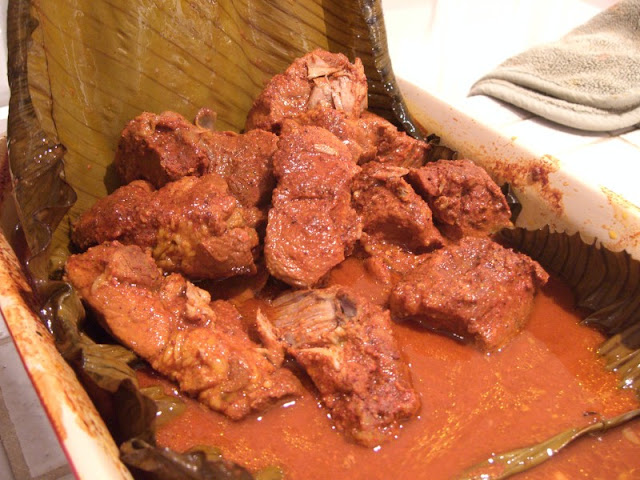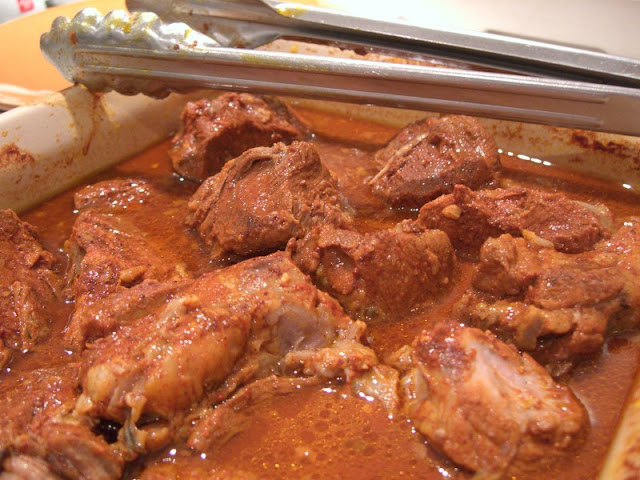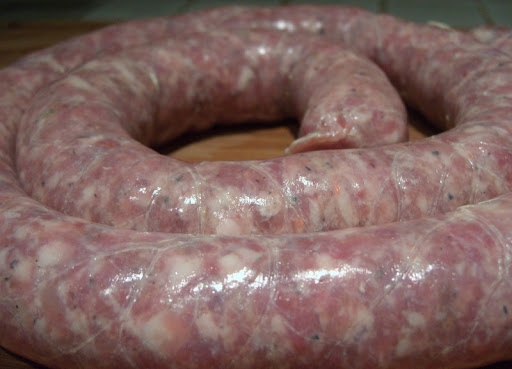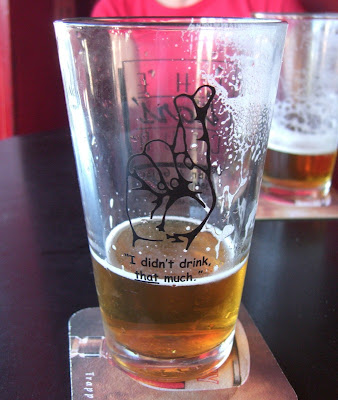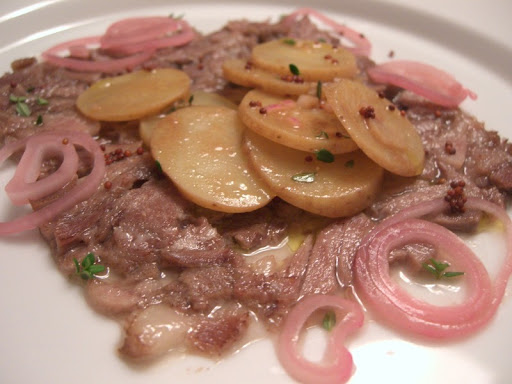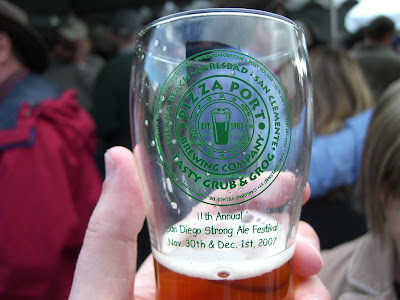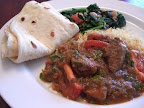
The dish we made with our goodies from Northgate Market is Coppa di Testa. The Italian version of head cheese, testa is truly fantastic stuff. It is a sort of sausage-meets-terrine made of cooked pork pieces and spiced broth set into a firm gelatin mold. Thinly sliced, you can eat it cold with crusty bread or warmed to release the gelatin broth's saucy goodness. If you can obtain the ingredients, it's surprisingly simple to make.
First you need pig's feet (trotters) to contribute sufficient gelatin to the stock. You can use powdered gelatin instead, but using the real thing adds flavor to the mix, in addition to structure.
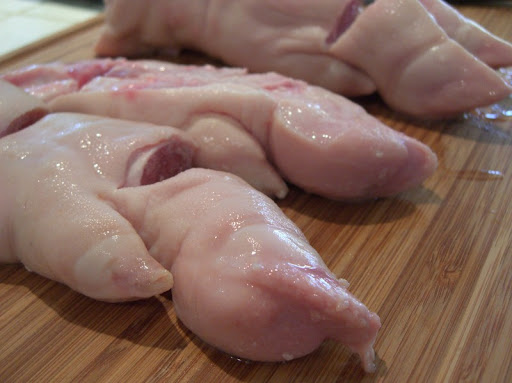
A few pork tongues for extra meatiness (optional, but an easy addition).
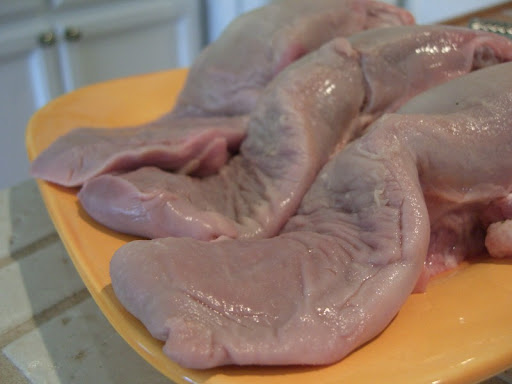
And of course testa just couldn't be testa (Italian for "head") without a nice pig's head to provide loads of silky pork texture and flavor. If you are brave, you can click on the image below to see the head we used.

And from the other side:

As you can see (if you peeked), we used a half a pig's head, split down the middle. None of our recipe references commented on the brain, so we were wary and discarded it.
Our version of testa is spiced with the sweet and aromatic flavors of cinnamon, cloves, coriander, allspice and nutmeg plus the deep flavored herbs thyme, bay and parsley. Carrot, celery and onion are all standard additions to almost any stock or stew. Black peppercorns and plenty of salt round out the mix.
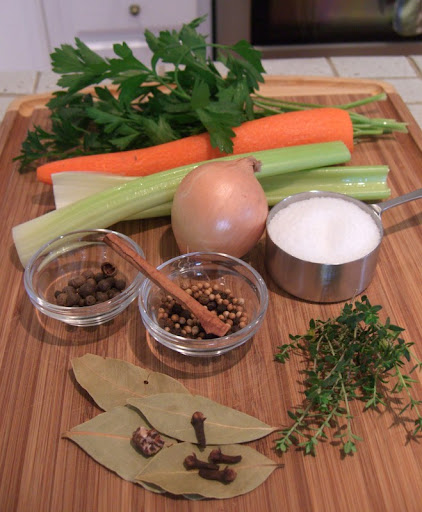
Everything gets simmered in a very large stockpot until the meats are tender and literally falling off the bone. We found that it's a lot like making a big pot of turkey soup, just slightly different ingredients.
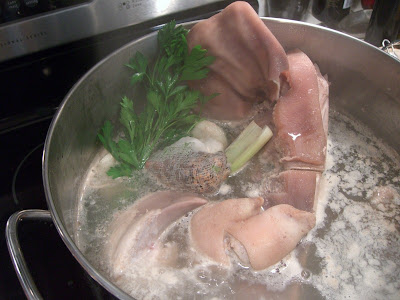
When it comes out, it looks like this:

Sorting through the cooked meats for the "edible" pieces was a bit of a challenge (since neither of us is very familiar with knuckle, snout or ear) and we may have discarded some true treasures. An Italian grandmother offering a few pointers would've been appreciated.
But, after peeling the skin off the tongues and chopping everything into irregular pieces we were rewarded with a brimming bowl of yummy, sticky, bite-sized pork morsels.
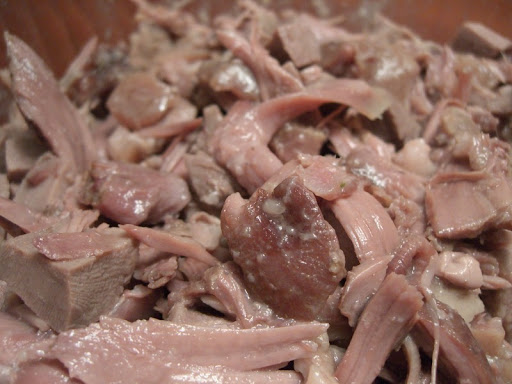
Before molding the testa, scoop some broth onto a plate and chill it. If there's enough gelatin it should set up quickly and spring back when pressed. We stirred the gel in this photo so it looks a bit soft set, but you can see it's solid toward the left.
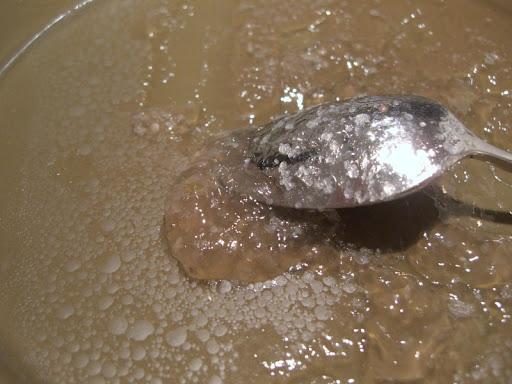
Finally, the meat goes into a mold with enough spicy gelatin broth to just cover and the whole thing gets chilled overnight.
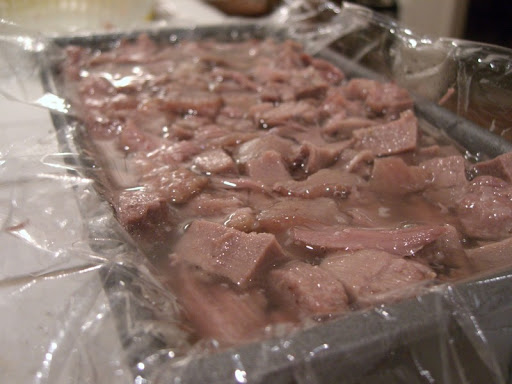
The result - a beautifully marbled slab of porcine goodness.
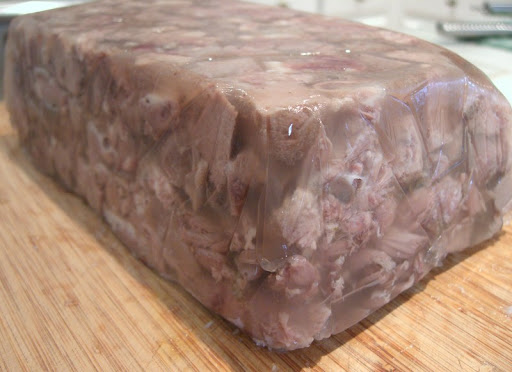
Here is a slice that has been warmed on a plate until the gelatin melts into a rich, sticky sauce:

When making the testa, we relied primarily on the recipe from Paul Bertolli's Cooking by Hand , but we also referenced Charcuterie, The Whole Beast
, but we also referenced Charcuterie, The Whole Beast
 and The Babbo Cookbook
and The Babbo Cookbook .
.
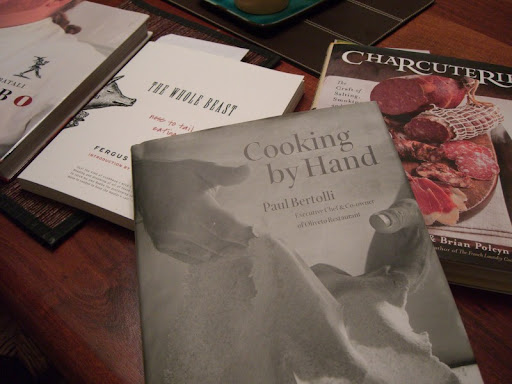
I was amused to find that we own *at least four* cookbooks with variations on this dish. Below is the recipe we ended up with.
Coppa di Testa
A 16 quart pot is *just* big enough. Use an aggressive amount of salt, especially if you intend to eat this cold since flavors are muted at cooler temperatures. We found it was easier to slice using a serrated bread knife and when set "upright" rather than inverted.
1/2 pig's head (about 4.5 pounds)
2 pig's feet (1.75 pounds total)
3 pig tongues (2 pounds total)
6 quarts cold water (or as needed)
Several small, fresh thyme sprigs
4 bay leaves
1 teaspoon black peppercorns
1/2 cinnamon stick
4 whole cloves
25 allspice berries, cracked
1/2 teaspoon coriander seed
1/8 piece nutmeg
Several large parsley sprigs
2 celery stalks
1 large carrot, peeled and cut in half
1 small onion, peeled and cut in half
75 grams (1/4 cup) kosher salt
Rinse the head, feet (trotters) and tongues under cold water. Remove and discard the brain from the cut side of the head. Place the pig parts into a large stockpot and cover with cold water by about 2 inches. Bring to a boil and skim off the scum that floats to the top.
While the pot is heating, place the thyme, bay leaves, peppercorns, cinnamon stick, cloves, allspice, corriander seeds and nutmeg onto a small square of cheesecloth and tie into a loose bundle with kitchen twine. Tie the parsley together with twine to make it easier to remove.
Reduce heat to a simmer and add the spice bundle, parsley, celery, carrot, onion and salt to the pot. Cook gently for 2 1/2 to 3 hours or until the meats are very tender. Skim foam from the surface as needed.
Using long tongs, remove the tongues after the pot has been simmering for about 1 hour and 15 minutes. When cool enough to handle, peel and cut off the skin with a small knife. Trim away any grissle and cut the tongue meat into irregular 1/2-inch pieces. Put into a bowl with a little of the cooking liquid and keep warm in a low oven while the rest of the pork cooks.
When the meats are tender, carefully move the head and feet to a large tray to cool. Pick through the trotters and keep any bits of meat found around the knuckles. Remove all the meat from the head, plus some of the snout (not quite meat, not quite fat) and a little of the soft, tender skin pieces. Chop the meat into irregular pieces from about 1/2-inch to an inch each. Cut the snout and skin pieces smaller, about 1/4-inch. Mix the tongue pieces with the head and feet meats.
Pour the stock through a fine mesh strainer into another large pot. Scoop a large ladleful of broth onto a plate and chill to check the geletin content. When cooled, maked sure the gel has set up nicely and springs back when pressed. If not, return the stock to the heat and simmer to reduce it somewhat, then check again.
Line a loaf pan or terrine with plastic wrap and fill with the meats. Pour enough cooking liquid into the mold to completely cover, then tap the pan on the counter to try to remove trapped air bubbles. Fold the plastic wrap over the top and chill the testa overnight. To serve, remove from the mold and slice thinly. Eat at room temperature with crusty bread or on a warm plate to soften the gelatin.
